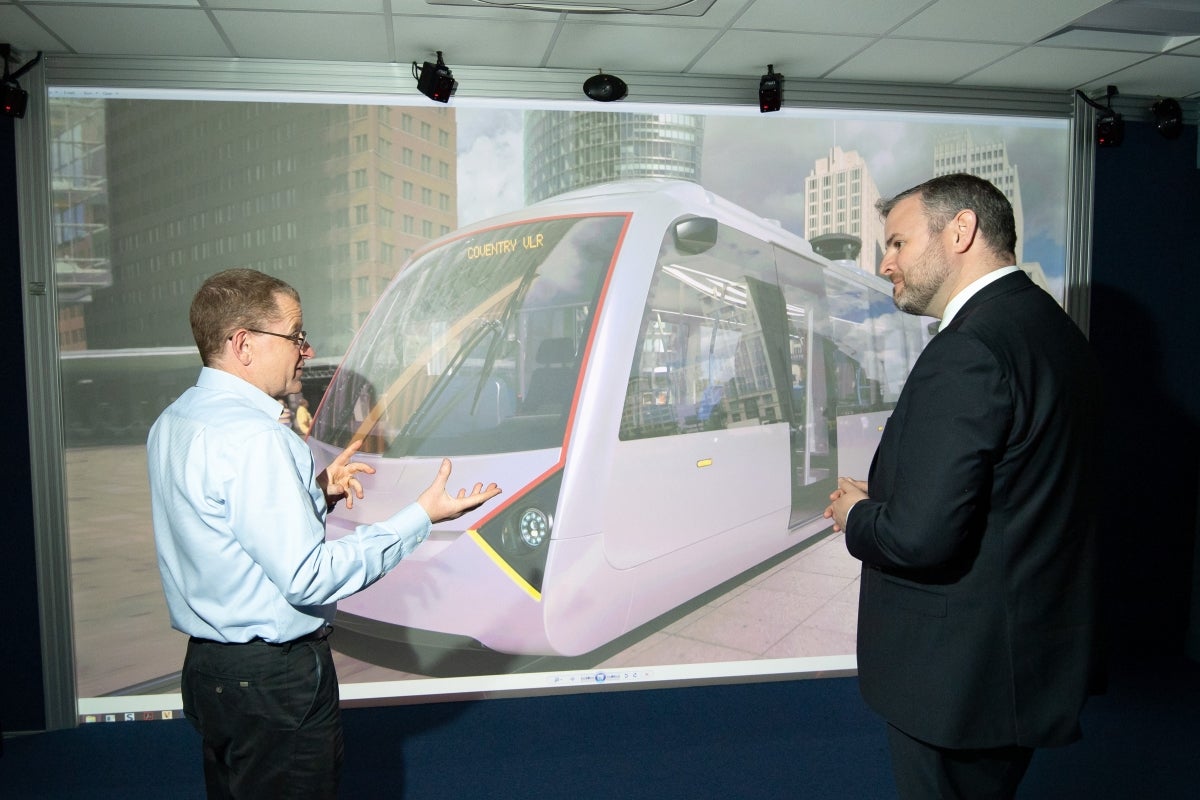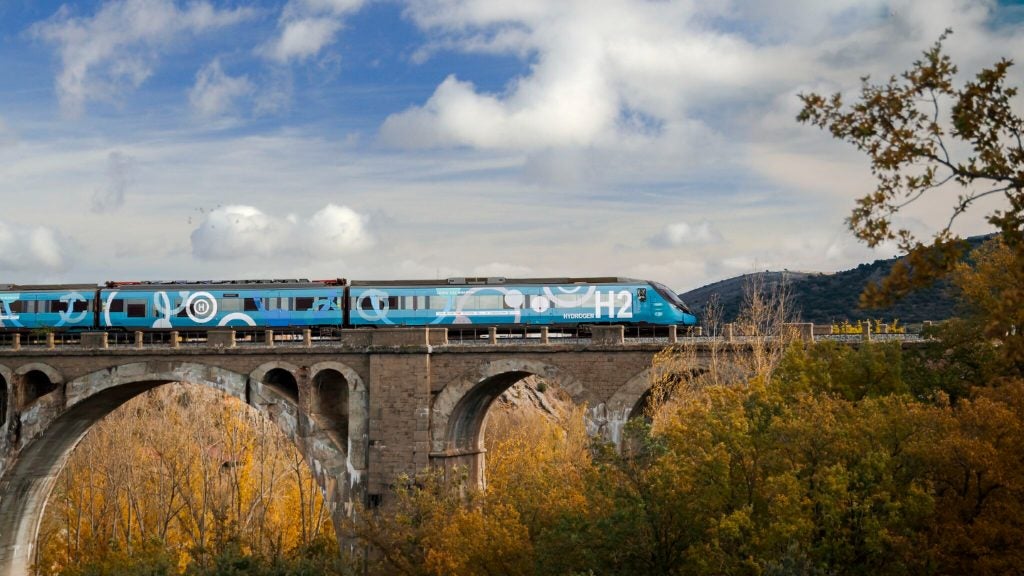
“This is a really important milestone in the development of a very light railway system in Coventry.” City councillor and cabinet member, Jim O’Boyle, was speaking on the news Transport Design International (TDI) had secured a contract to help develop a very light rail (VLR) vehicle for the city’s streets in 2018.
The £14.7m three-year project, named BRAINSTORM, brings together academia, industry and the local authority with the aim of developing an affordable, environmentally friendly, autonomous transportation solution.
Headed by Warwick University’s Warwick Manufacturing Group (WMG), the turnkey project will develop a lightweight, battery-powered vehicle running on specially designed rails throughout the city. WMG is working with industry specialists TDI and Far UK, along with Composite Braiding, on the vehicle design.
Frame development
In May 2019 the group announced it had developed a vehicle frame, made from weaved or braided carbon fibre composites into a series of tubes. “We’re looking particularly at carbon-based mouldings,” explains TDI’s managing director Martin Pemberton.
Comprising thermoplastic tubes, the frame’s beams are customisable, with the same outer diameter but an inner wall thickness that can be adapted to suit the position the beam takes on the vehicle. Joining is standardised, cutting manufacturing costs though an automated process able to produce over a mile of tubing a day.
It also means should a part be damaged or compromised, it can be replaced without the need for any significant structural work, using simple welding and adhesives techniques.
How well do you really know your competitors?
Access the most comprehensive Company Profiles on the market, powered by GlobalData. Save hours of research. Gain competitive edge.

Thank you!
Your download email will arrive shortly
Not ready to buy yet? Download a free sample
We are confident about the unique quality of our Company Profiles. However, we want you to make the most beneficial decision for your business, so we offer a free sample that you can download by submitting the below form
By GlobalDataWMG says the unique braiding method allows for numerous materials to be used, including carbon, glass and aramid. “They can be combined with a huge range of thermoplastics, from low-cost polypropylene to high-end polyether ether ketone (PEEK) to create a material that suits the given application,” it said.
Cutting weight, space and more
Pemberton says the group has been looking to cut the weight of the vehicle’s electric bogies too, often the heaviest part, as well other innovations. “We’re looking at advanced battery capability with rapid charging, sometimes in as little as two to three minutes; we’re having to design this in such a way that we can build it into the floor to keep the centre of gravity load,” he continues. “A lot of it’s about miniaturisation, being able to package things in the right way.”
Making components smaller yet easily accessible has been a challenge, Pemberton says, but doing so was essential. “We were asked to move a certain number of people in the vehicle and keep the vehicle length down to about 10m. The target was to keep the weight of the vehicle less than one tonne per linear metre of the train.”
Each electrical component has been designed for space, ease of access and to reduce the need for maintenance intervals. Many of the traditional parts have been replaced with plug-and-play units which can be swapped easily.
“The majority of systems are electrically operated, which immediately takes one skillset away from the maintenance requirement… If we’ve got no fluids in the vehicle, for example, you haven’t got to keep topping up levels. Take a bogie, if there’s a problem we won’t repair it on the vehicle, we’ll simply put a new one on. The same with the air conditioning and the control system.”
As well as cutting weight and maintenance, ultimately the vehicle will be driverless, offering a number of operational benefits, Pemberton says. “The whole concept only starts to become really commercially viable if you can take the driver out of the vehicle. If you’ve got a lot of vehicles, that’s a lot of drivers and drivers are usually the highest cost element of any transit system.”
He adds that an automated network will allow more services to run with increased accuracy, saving money and improving reliability. “As we’ve got a large number of smaller vehicles, the idea is that the headway can be increased so you can have vehicles literally coming around the corner every few minutes”.
A VLR vehicle with the future in mind
Once the vehicle reaches the end of its service life – intended to be 20 years – its environmental credentials don’t end with it. WMG say the thermoplastic materials used are inherently recyclable, unlike conventional composites, and Pemberton believes other systems will be reused too.
“It really has the potential to revolutionise the transit system but it is only recently that technology has caught up with aspiration,” he says. “One expects that propulsion systems and battery technologies are only going to get better, smaller, and more efficient.”
The partnership hopes an 18m demonstrator vehicle – which will be able to carry 20 seated and 50 standing passengers – will be ready in 2020, with testing set to take place, on a site being built in Dudley, UK, at the Very Light Rail Innovation Centre, in late 2020 or 2021.







